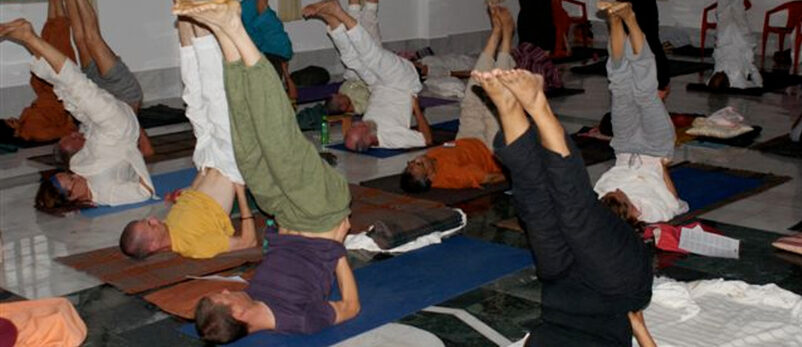Asana
Asana is defined in Sage Patanjali’s Yoga Sutras as ‘that position which is comfortable and steady’. The raja yogis, then, practised asanas to develop the ability to sit comfortably in one position for an extended period of time, as necessary for meditation. The hatha yogis, however, found that asanas open the energy channels and psychic centres. They became tools to attain higher awareness, enabling the exploration of the body, breath, mind and subtle states.
Today, asanas are acknowledged to be techniques which place the physical body in positions that cultivate awareness, relaxation, concentration and meditation. An important part of this process is the development of good physical health by stretching, massaging and stimulating the pranic channels and internal organs.
Scientific research has proved that asanas prevent disease, promote health and have curative abilities, therefore many professionals use them to manage psycho-somatic stresses and diseases.
Asanas work on both the body and the mind. These are not separate entities although there is a tendency to think and act as though they are. The gross form of the mind is the body and the subtle form of the body is the mind. Practising asanas integrates and harmonises the two.
There are many informative books on asanas on the market, but the information contained in Asana, Pranayama, Mudra, Bandha, substantially contributes to the general corpus.
(Ref: www.biharyoga.net)
